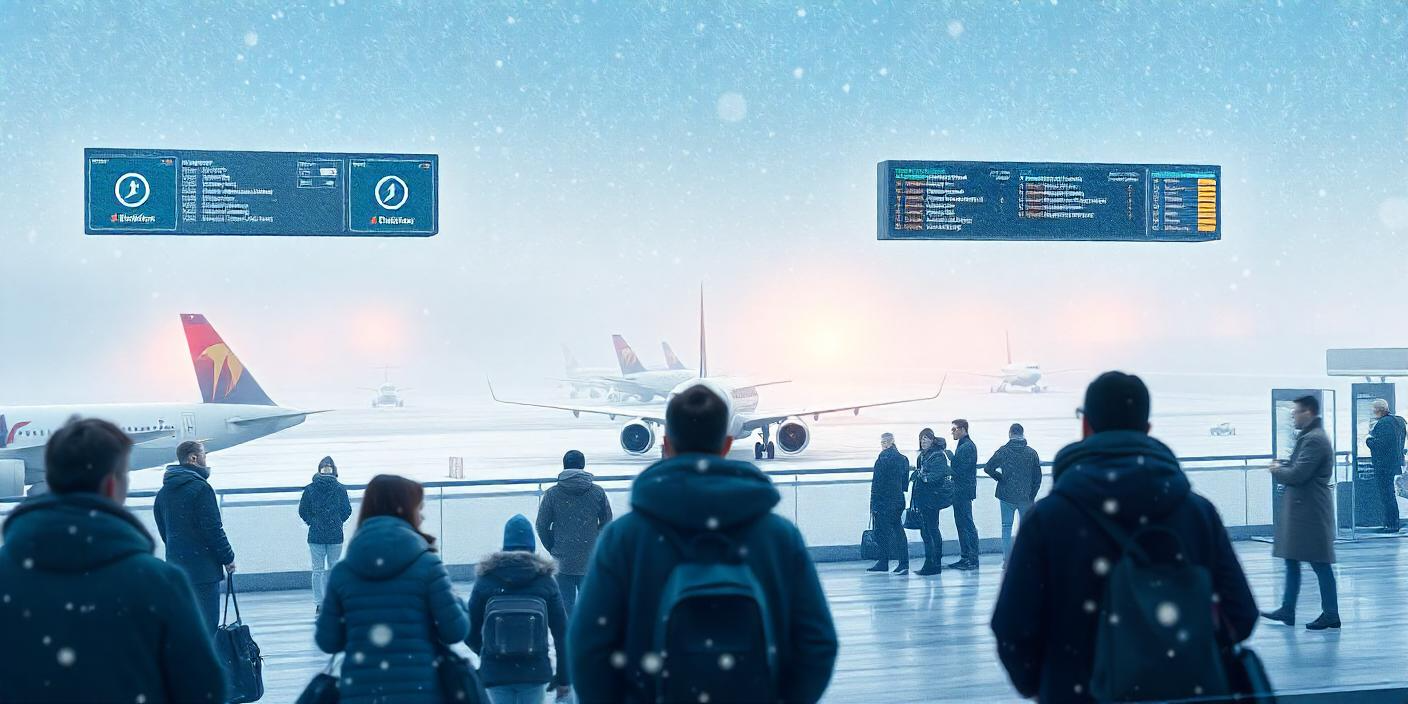Introduction
Winter storms in Stockholm. Blizzards in Montreal. Ice accumulation in Anchorage. For airlines and airports operating in northern latitude regions, extreme weather isn’t just an occasional disruption—it’s a seasonal reality that demands sophisticated airline disruption management software and strategies. According to EUROCONTROL, weather was responsible for 5.2% of all flight delays in Europe during the winter of 2022-2023, highlighting the significant impact of northern latitude operations on global aviation.
Table of Contents
Disruptions in Airline Operations
When winter weather strikes, airlines face a cascade of operational challenges. Flight delays and cancellations can trigger a domino effect across an airline’s entire network. A delayed departure from Oslo can impact connections in Copenhagen, Helsinki, and beyond, creating a complex web of disruptions that affects thousands of passengers.
Recent operational data reveals the scope of these challenges:
- Norway’s Avinor airports manage approximately 340,000 aircraft movements during winter months annually
- Helsinki-Vantaa Airport successfully handled over 20,000 flights during peak winter season 2023 with a remarkable 95% on-time performance
- Major northern airports invest heavily in winter operations, with Helsinki Airport alone allocating €10 million annually for snow removal equipment
Beyond the immediate operational challenges, airlines must manage passenger expectations and maintain effective communication. Modern travelers demand real-time updates and swift resolution of travel disruptions, making robust communication systems essential.
Disruptions in Airport Operations
Airports in northern regions face unique challenges during extreme weather events. Frankfurt Airport, one of Europe’s busiest northern hubs, operates more than 200 winter service vehicles to maintain operations during harsh weather conditions. Maintaining safe runway conditions requires constant attention and specialized equipment. Sub-zero temperatures can affect everything from jet bridges to baggage handling systems.
Key operational challenges include:
- Ensuring continuous runway accessibility through snow removal and de-icing
- Managing gate congestion when multiple flights face delays
- Maintaining efficient passenger flow through terminals despite weather-related bottlenecks
- Balancing staff workload during high-stress periods
Some of the airports using predictive Systems to avoid chaos and increasing revenue. It also helps to reduce the operational inefficiency.
How Airlines and Airports Must Work Together
Success in managing northern latitude disruptions demands unprecedented collaboration between airlines and airports. Real-time data sharing has become crucial for effective disruption management. When an airport shares live runway condition reports, airlines can adjust their operations proactively rather than reactively.
Finland’s “Snow How” program at Helsinki Airport demonstrates the power of collaborative approaches:
- Coordinated de-icing procedures that minimize delays
- Shared resource allocation during disruptions
- Integrated passenger communication strategies
- Collaborative decision-making protocols that have achieved 95% on-time performance
Technology-Driven Solutions
Artificial Intelligence and machine learning are revolutionizing how northern airports and airlines manage disruptions. Predictive analytics can now forecast potential disruptions hours or even days in advance, allowing for proactive rather than reactive management.
Current innovative solutions include:
- AI-powered weather forecasting systems that predict runway conditions
- Automated rebooking systems that can process thousands of passenger itineraries in minutes
- Smart ground handling systems that optimize resource allocation during disruptions
- IoT sensors providing real-time infrastructure condition monitoring
Conclusion
As climate patterns become more unpredictable, the ability to manage disruptions effectively will become increasingly crucial for northern latitude aviation operations. The success of airports like Helsinki-Vantaa, with its 95% on-time performance despite harsh winter conditions, demonstrates that effective disruption management is achievable with the right combination of airline disruption management software (technology), collaboration, and planning.
The future of disruption management lies in:
- Proactive planning based on predictive analytics
- Strengthened airline-airport partnerships
- Investment in cutting-edge technology solutions, following the example of Frankfurt Airport’s comprehensive winter fleet
- Continuous improvement of passenger communication systems
For airlines and airports operating in northern latitudes, the question isn’t whether disruptions will occur—it’s how effectively they can be managed when they do. By embracing modern solutions and fostering stronger partnerships, aviation stakeholders can turn this challenge into an opportunity for operational excellence.
Ready to transform your approach to disruption management? Contact VoyagerAid today to learn how our solutions can help your organization navigate the complexities of northern latitude operations more effectively.






